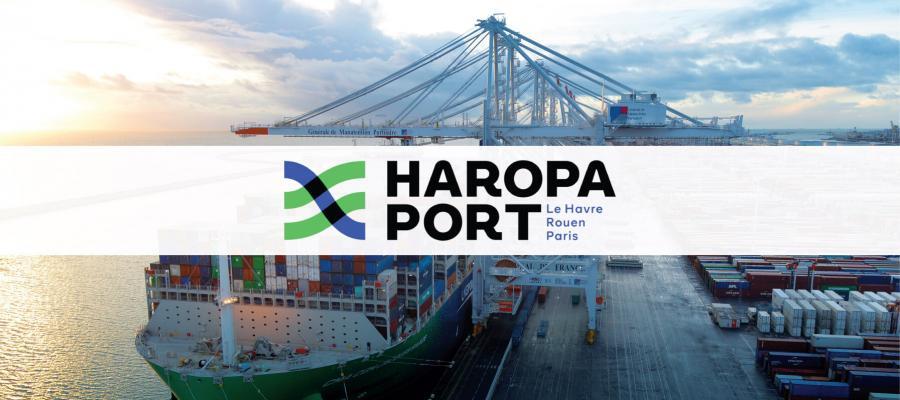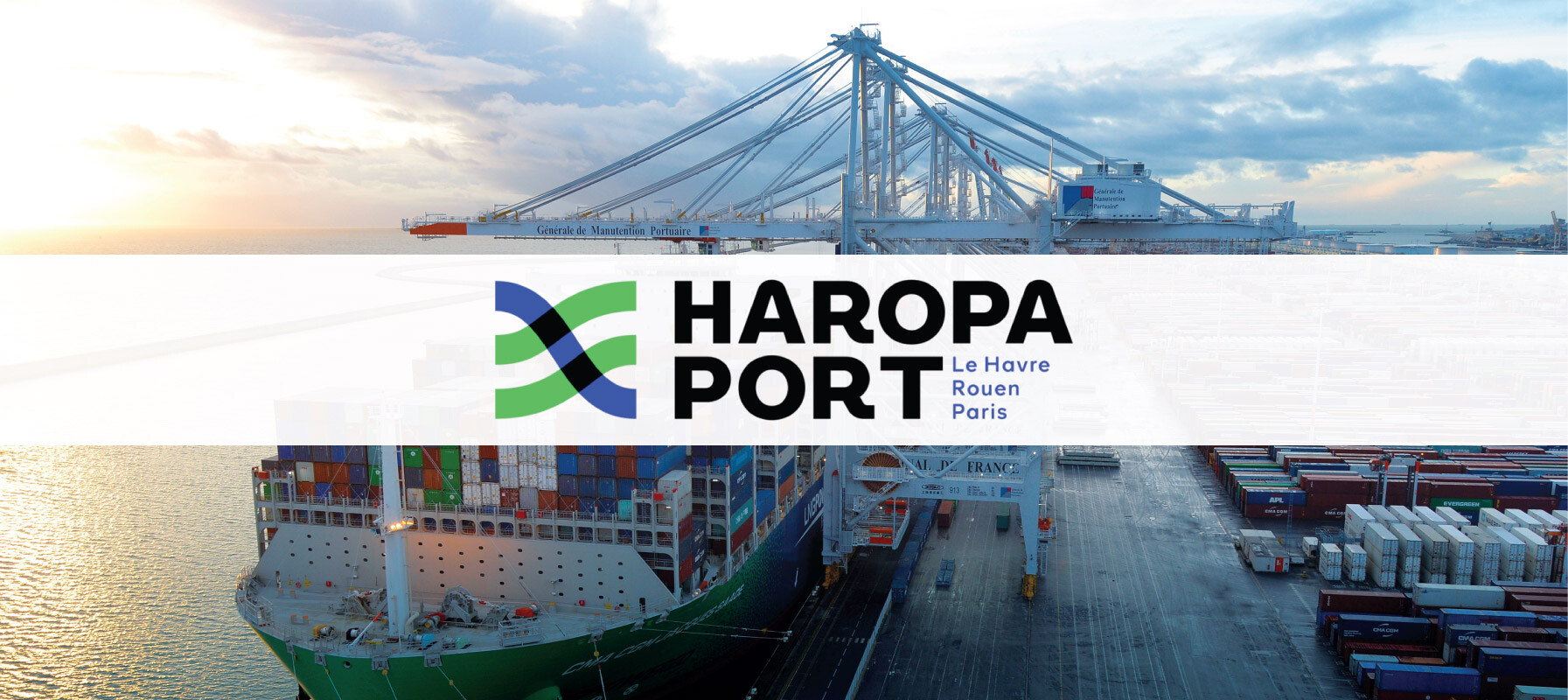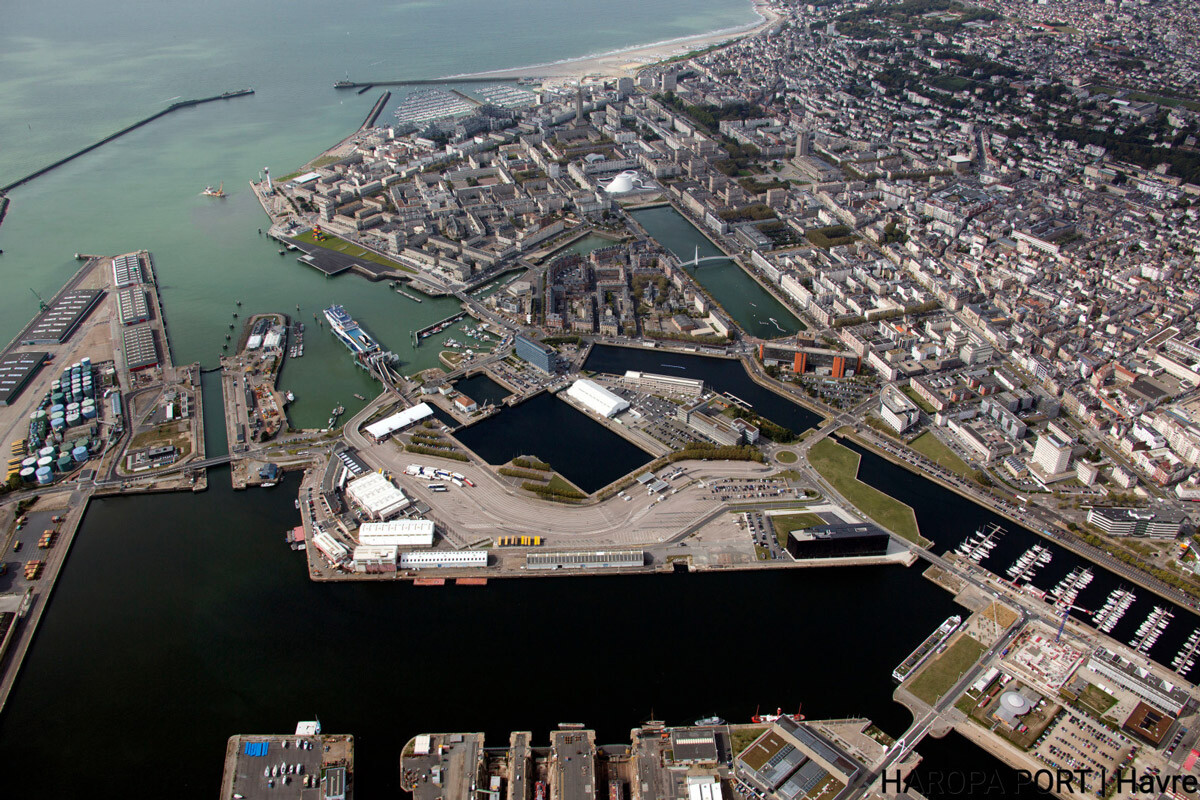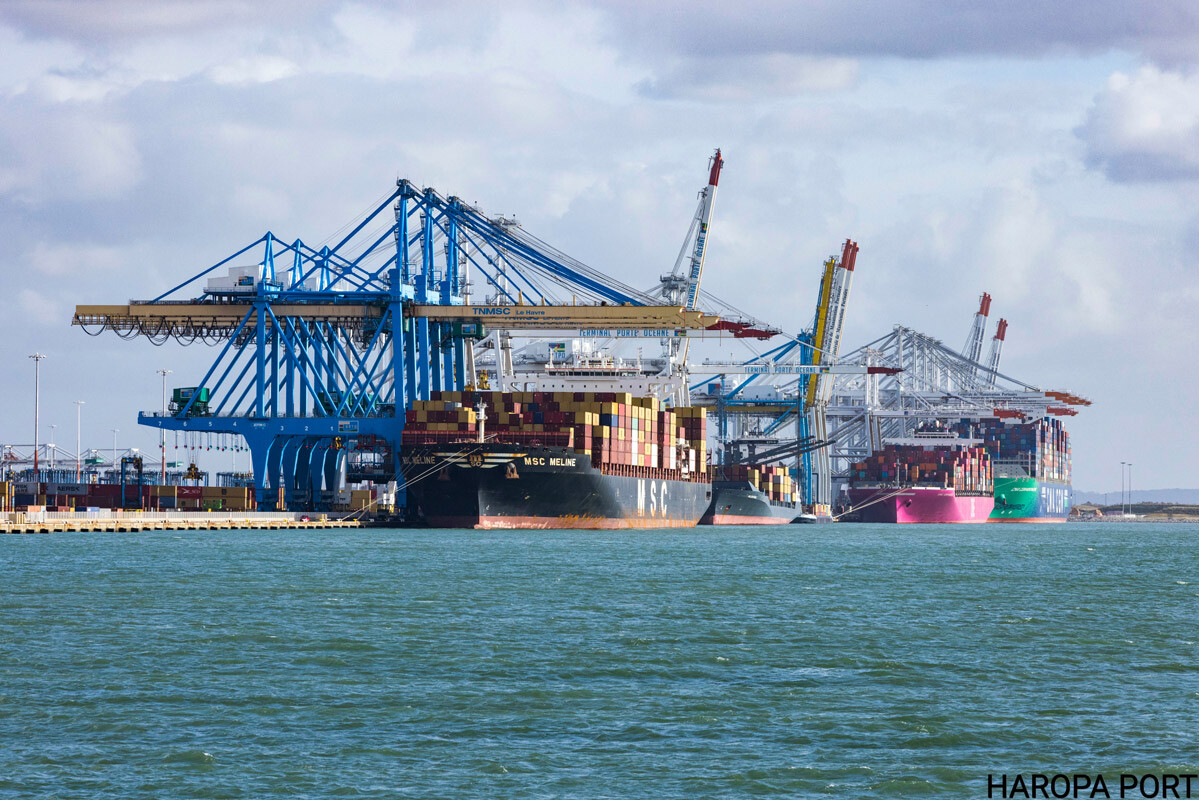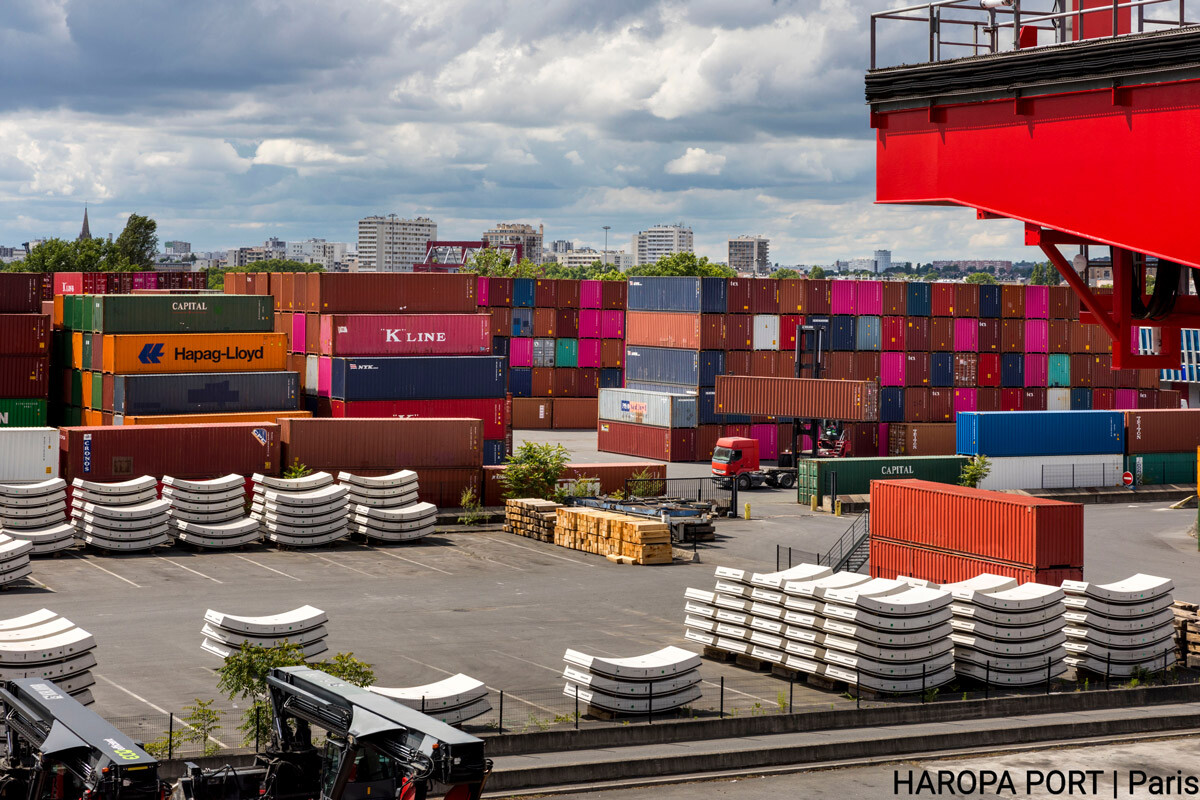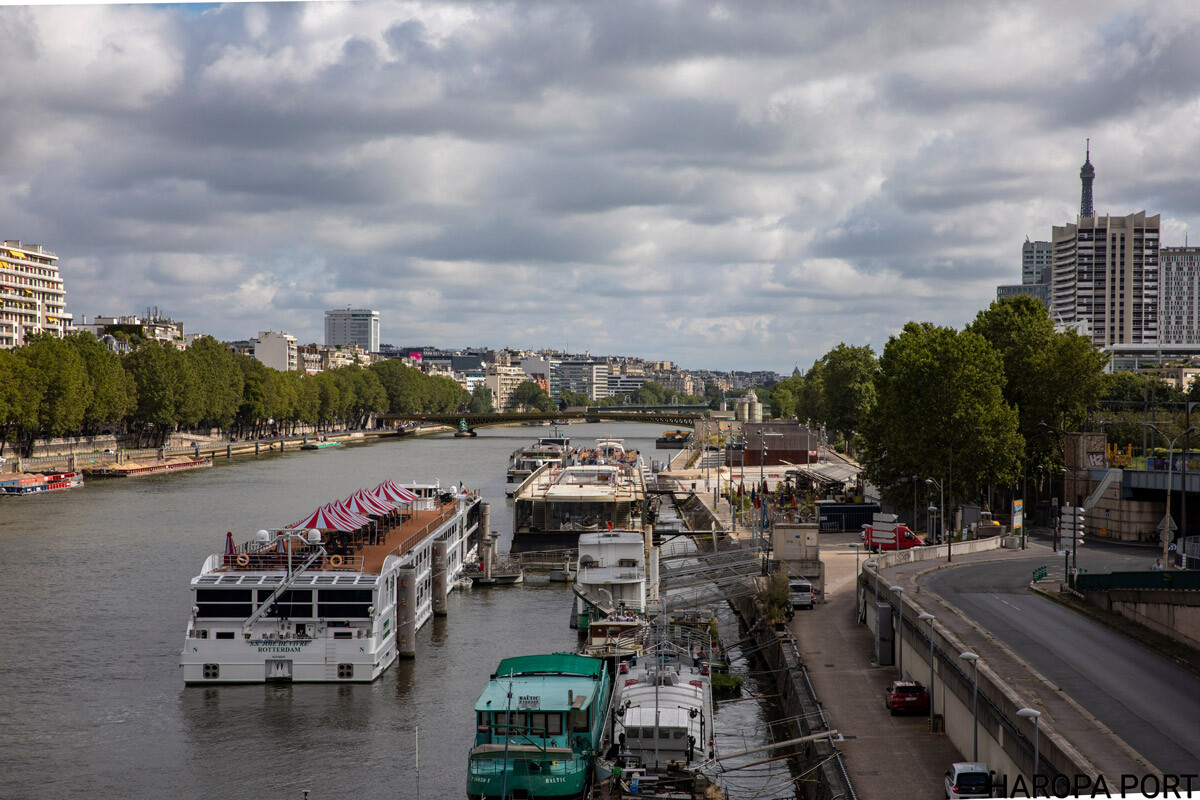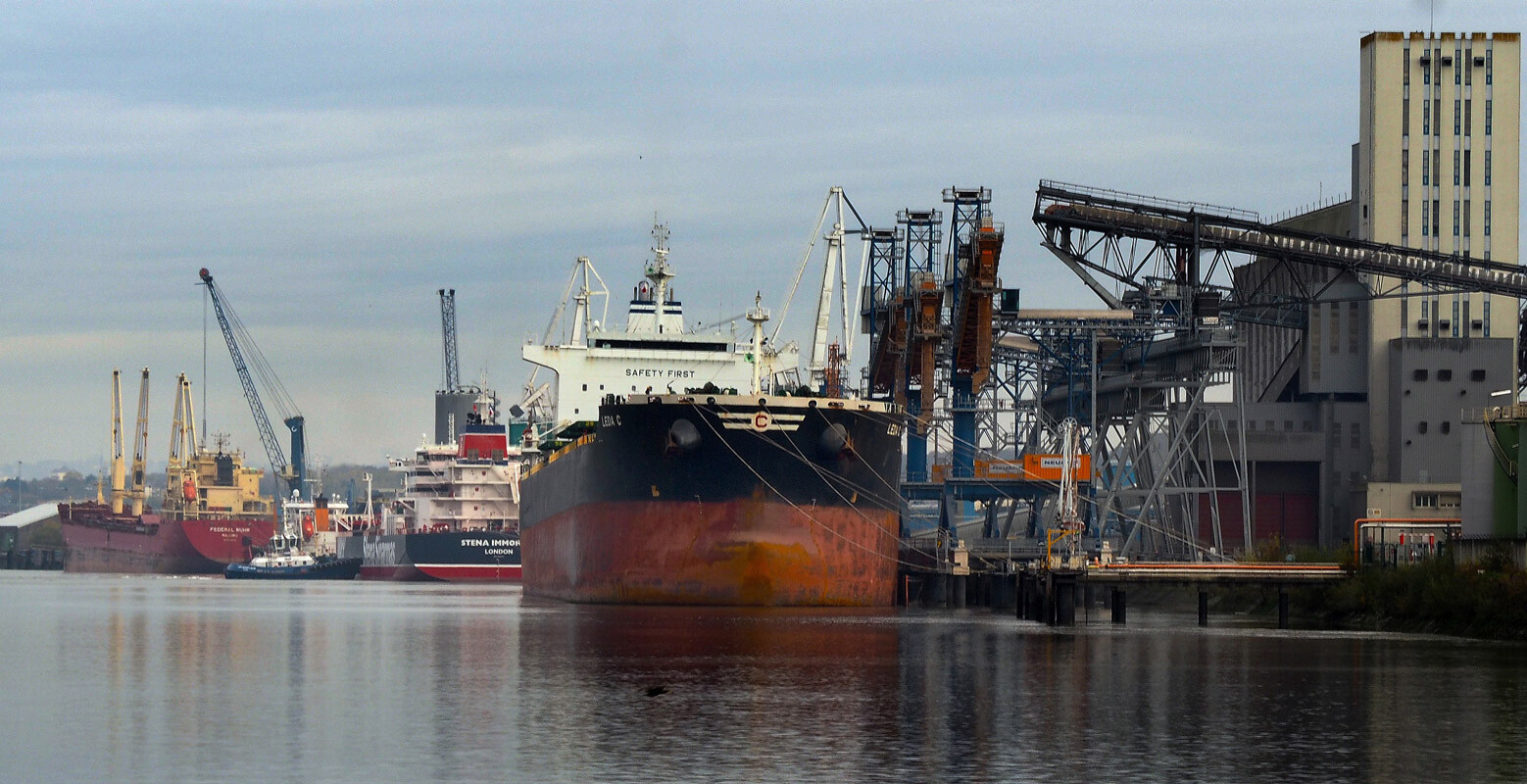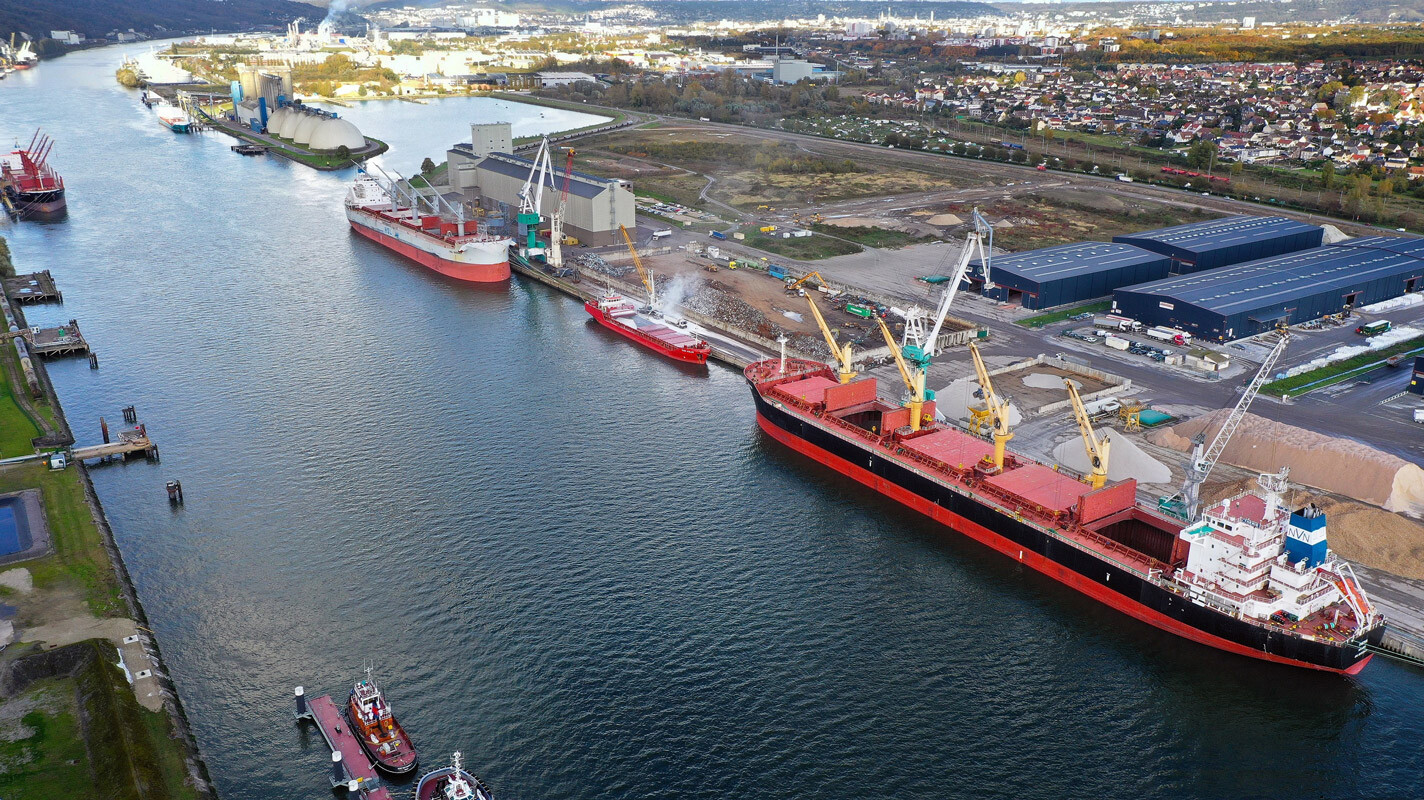Interview with
Mr. Kris Danaradjou
Deputy General Manager
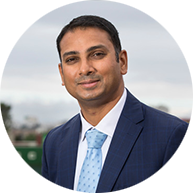
Please introduce yourself.
I am Kris Danaradjou, Deputy General Manager in charge of development of HAROPA PORT. After graduating as a member of the high-level French corps of engineers in charge of public infrastructure (Ingénieur des Ponts, des eaux et des Forets) and from the Grenoble school of political science (Sciences Po), I began my career in the Ministry of National Infrastructure and Transport before going on to a variety of project management posts for works projects (most notably in the Louvre Museum in Paris).
I joined HAROPA- Paris Ports in 2014 as a deputy manager for development, later being appointed Director of the Port of Gennevilliers, the leading multimodal platform in the Greater Paris region.
In 2020, I was appointed as deputy general manager of HAROPA – Le Havre, where I was notably given responsibility for liaising with local government, development of digital innovation and overseeing the whole range of development projects, but with a special focus on multimodality.
I took up the post of Deputy General Manager of HAROPA PORT in June 2021 when the three ports merged, taking on specific responsibility for development of the port complex.
What is HAROPA and what is its jurisdiction?
1st French port complex, 4th Northern European port complex in terms of tonnage, HAROPA PORT is the outcome of a merger of the three Seine Axis ports, Le Havre, Rouen and Paris, that we finalized in June 2021.
It is connected to every continent, with calls at 650 ports, including weekly shipping connections, for all types of traffic (containers, ro-ro, bulk, ferry, conventional and project cargo of course…). We have more than 50 regular shipping companies and about 3,500 commercial offers.
In 2021, our maritime activity represented 84mt (up by 12%) and river-based activity stood at 23mt (up 4%), with around 110mt being handled.
Le Havre, Rouen & Paris have very different and diverse capabilities. Can you please explain a bit about each of their facilities? What are the customer bases of each entity?
Yes, that’s why it was so obvious to merge. Today, HAROPA PORT capitalizes on the key advantages and specific features of its three ports:
- The port of Le Havre, the first deep-water port of call in the Northern European range for imports and the last for exports, is today the leading French port for containers.
- The port of Rouen holds a strategic position deep within an estuary and is the leading West European port for cereals exports.
- The ports of Paris form the leading French port complex for goods transport and the second most important at European level.
Le Havre is situated on the northwest corner of Europe, ideally situated for import to the French market, but also as a transhipment point to other parts of Europe, and also trans-ocean. What advantages can you cite over your main competitors, Rotterdam, Antwerp, and to some extent Hamburg? (Major shipping lines, transit times, road and rail connections, regular & ad hoc feeder networks, etc.)
In addition to what I have already mentioned, I could add the following:
- Le Havre is the first port of call on imports and last on exports on the Northern European rotation, which offers competitive transit times.
- It is a port in deep water with exceptional nautical access: from ‘pilot on board’ to start of handling operations, vessels wait less than 1 ½ hours.
- As a major river/seaport, HAROPA PORT has a unique configuration in the world, and serves an extensive hinterland on either side of the Seine Axis, allowing service to be provided to the biggest consumer catchment area in France (Seine Valley/Paris Region) and the second biggest market in Europe with 12 million consumers.
- From Le Havre up to Paris, the port complex can point to 1.8m sq. m. of logistics warehousing now in service and almost one million sq. m. of planned warehouse space, which is of particular interest given that France’s Normandy and Greater Paris regions are currently experiencing a context of tight real estate supply.
- Finally, HAROPA PORT is a non-congested port, in both maritime and hinterland modes. In the context of maritime congestion in the Northern Range ports and upheavals in the supply chain that have impacted all Supply Chain actors, HAROPA PORT has been able to show resilience and adapt to the situation. Thanks in particular to its nautical capacities, the number of ships waiting in the Port of Le Havre has always, on average, been lower than in the other ports of the Northern Range and HAROPA PORT has welcomed ships that other ports have not been able to accommodate. Thanks to the mobilisation of all port services, we were able to handle nearly 90 unplanned calls in 2021.
Le Havre has historically had a very close relationship with the UK and its ports (if we put aside fishing rights). Has the Brexit situation affected this trade at all, either in passengers or freight?
The recent years have been “exceptional years”; in particular with the pandemic and Brexit-related measures that affected both passengers and their vehicles and freight in 2021. But as a direct consequence of Brexit, Brittany Ferries’ new weekly freight service between Le Havre and Rosslare (Ireland) has been operating since November 2021. This provides a Friday-evening departure from Le Havre, arriving at Rosslare on Saturday afternoon and returning to Le Havre on Sunday. This new service supplements the daily connection to Portsmouth that now also proposes, since the beginning of 2022, a new offering in partnership with CMA CGM handling unaccompanied chassis-mounted containers. Traffic to Ireland and the United Kingdom is diversifying and is reliant on the Seine Axis and all France’s export and import shippers, especially operators in and around the Rungis wholesale market in Paris handling regular throughput of fresh produce. And lastly, we expect to see the return in 2023 of passenger traffic on these services to Ireland and the United Kingdom, and this will further enhance the ferry’s attractiveness.
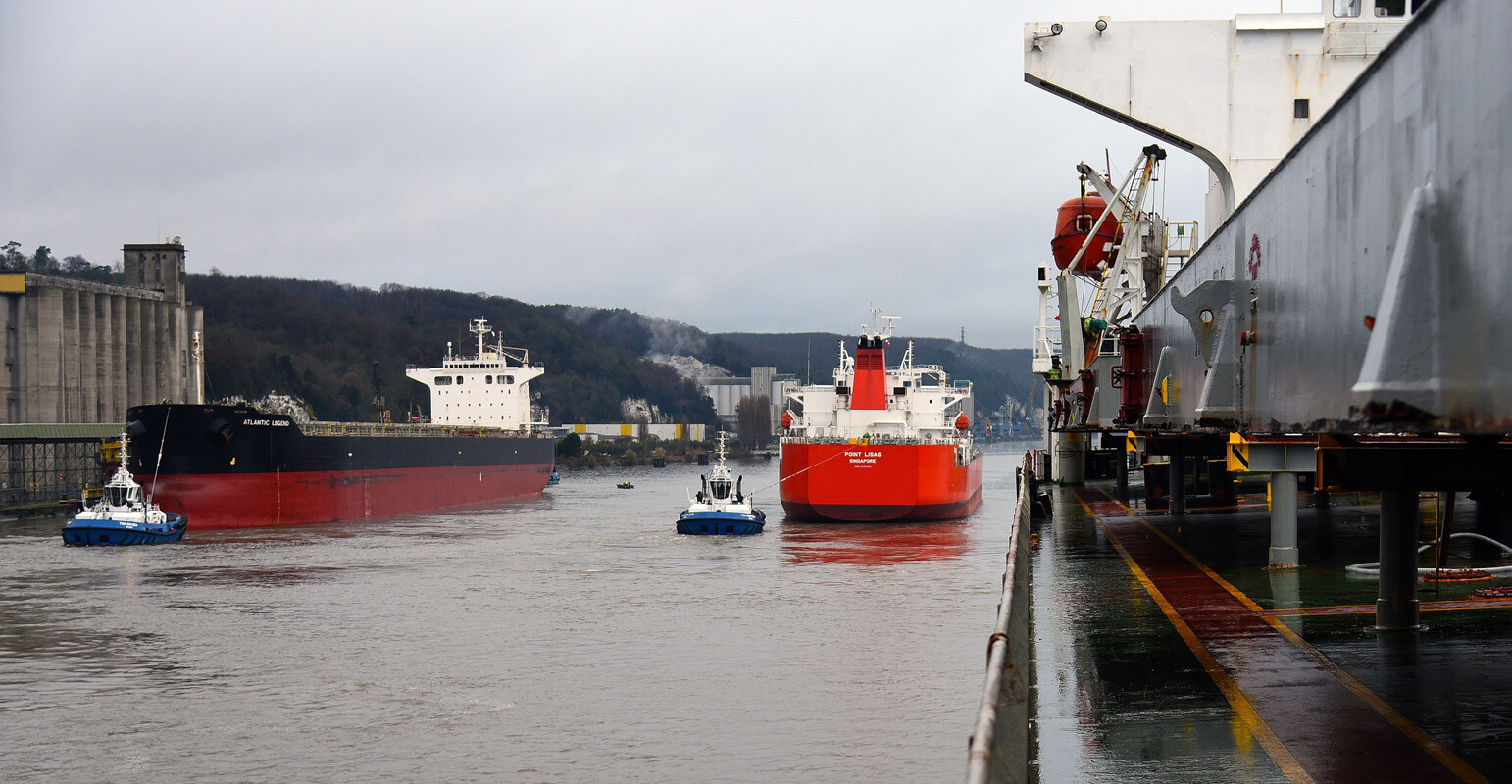
Our newsletter covers all kinds of maritime news and trade, but we highlight project cargo where we can. What can you tell us about project cargo handled by each of the Haropa locations, what can you propose in this respect, and what do you see for the future of this business in Haropa?
Among its efforts towards more decarbonization, HAROPA PORT is working to develop its mass transit modes with freight and rail. This is an important aspect of its Strategic Project. Already committed to this, HAROPA PORT plans to increase its efforts to achieve a 30% modal shift by 2025, mainly by: 1. continuing the development of combined rail transport, 2. developing inland waterway combined transport, and 3. expanding the rail and river hinterland with connections to main production and consumption areas. These objectives therefore include modal transfer for exceptional packages on the Seine.
HAROPA PORT offers a number of key advantages for handling heavy packages.
The port complex has around thirty terminals (15 maritime and 12 river) with access for heavy loads: 7 in Le Havre, 6 in Rouen and 8 in Paris, plus 4 terminals at partner ports. These terminals form a network stretching from Le Havre to the east of Paris and can meet the needs of industrial operators along the whole length of the Seine.
We have available vertical and horizontal goods handling equipment with lift capacities of up to 650 tonnes (reach stackers, mobile cranes, rail gantries, rail cranes, etc.), and several sea- and river-going craft suitable for this type of goods traffic). Our terminals have a direct access to river and maritime barges, to road, and direct rail connections with block trains.
We also have large warehousing capacity (up to 61,000 sq. m. at Rouen Quevilly Terminal) and outdoor storage capacity (50,000 sq. m. at Western Terminal).
The types of heavy packages we can handle notably include electrical equipment, construction and civil engineering machinery, rail equipment, structural steelwork, offshore equipment, cable drums (oil and gas energy, aviation and aerospace, automotive sectors, etc.).
One sector especially is seeing meteoric expansion with the entry into service this year of Siemens Gamesa Renewable Energy’s plant for production of wind turbine blades and the assembly of turbine nacelles for offshore windfarms. Furthermore, heavy packages for land-based wind turbines are also destined to increase in numbers in coming years since they will need to be carried for installation on the farms, these being located to the east and the south of Paris. The Seine Axis and the geographical positioning of HAROPA’s maritime and river terminals should generally facilitate the logistics for these loads.
We can rely on the energy and expertise of a number of specialist actors in the port community: 4 river operators (Sogestran, CFT, Coalis and SCAT), a dozen or so stevedoring companies (CNMP, GMP, TN, SHGT, Seafrigo, KN, AMS, SOMAP, Dockseine, Logiyonne, etc.), 4 lifting and handling companies (Jagulak / Sens, Mordefroy / Troyes, Mediaco Maxilift, ATM Levage / Foselev and Adekma / Cantiniau) and 2 hauliers (Capelle/Augizeau, Stex). It is worth noting that in 2021, Logiyonne acquired a vessel (the Exelmans (length 86m) for regular river trips carrying heavy loads between Gron and Havre.
In order to develop modal transfer for exceptional loads along the Seine – as well as raising the awareness of companies to the many advantages of river-based transport – a working group was set up in September 2022 at the initiative of Logiyonne with operators in the exceptional load transport chain (transport organisers, shippers and port managers):
- Shared mapmaking efforts are currently underway to arrive at clear and easily usable visual presentations for customers and transport users indicating, in an initial phase, waterway routes, port facilities (potential sites and available resources) and exceptional road transport connections to the network.
- We are also doing work – on a voluntary basis – to identify companies capable of meeting requests for exceptional transport supply.
For more information, we have available a brochure dealing exclusively with heavy packages, and in addition our team would be delighted to be contacted by companies with projects in Northern Europe.
Please tell our readers contact details if they require more info or have questions.
Visit our website here: https://www.haropaport.com/en


